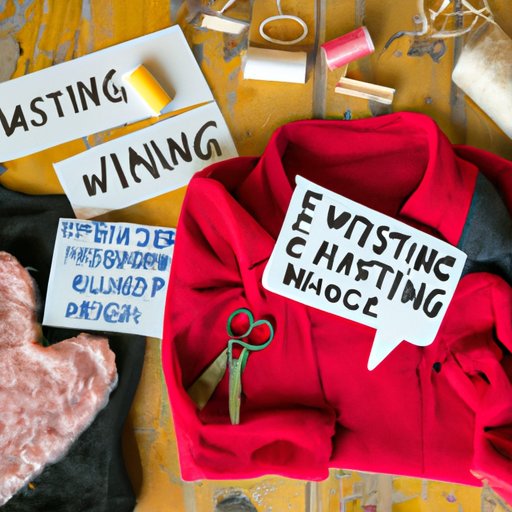Introduction
Fast fashion is a term used to describe the quick turnaround of low-cost items that are designed to be worn only a few times before being thrown away. It is a form of consumerism that has become increasingly popular over the past decade. According to Elizabeth Cline, author of “Overdressed: The Shockingly High Cost of Cheap Fashion”, “The average American buys 68 garments per year, compared to the 20 purchased by the average Briton and 10 by the average German.” This has resulted in an unsustainable cycle of consumption that is damaging both to the environment and to the garment workers who often toil in unsafe conditions.
Sustainable Shopping Solutions
There are several ways to reduce your contribution to the fast fashion industry and shop more sustainably. One of the most important things you can do is to research fashion brands that prioritize sustainability. Companies such as Patagonia, Eileen Fisher, and Reformation are all certified B Corps, meaning they are committed to using their business as a force for good. They use sustainable fabrics, pay their workers fairly, and even take back used clothing to be recycled into new items.
Another great way to reduce your environmental impact is to buy secondhand clothing. Thrift stores and consignment shops are full of unique finds that don’t come with the environmental cost of producing new items. There are also online marketplaces like Poshmark, Thredup, and Depop where you can find gently used clothing at a fraction of the price.
Finally, if you have items that you no longer wear, consider donating or selling them instead of throwing them away. Donate them to a local charity or sell them on eBay, Poshmark, or Thredup. There are plenty of people out there who would love to give your clothes a second life.
DIY Solutions
If you’re looking for more hands-on ways to reduce your contribution to fast fashion, there are several DIY solutions you can try. One of the easiest is to repair worn out items. If a shirt is ripped or a pair of jeans is fraying, take it to a tailor or seamstress to get it fixed. You can also invest in quality pieces that will last longer and look better with age. Look for natural fabrics such as linen, wool, and cotton that will stand up to repeated wear.
You can also get creative with upcycling and reuse materials from old items. Cut off the sleeves of a sweater to make a tank top or turn an old skirt into a scarf. You can even repurpose fabric scraps from thrifted items to make patches, headbands, or other accessories. There are tons of tutorials online to help you get started.
Supporting Ethical Fashion Practices
It’s not enough to just shop more sustainably; we must also support initiatives that will create lasting change in the fashion industry. There are several organizations working tirelessly to improve the lives of garment workers and promote ethical production. The Clean Clothes Campaign is an international alliance advocating for better labor conditions in the garment industry. Another organization, Fashion Revolution, is dedicated to creating a more transparent and sustainable fashion industry.
There are also ways to get involved in your local community. You could volunteer with a nonprofit organization that works to end poverty and exploitation in the garment industry. Or, you could organize a clothing swap with friends or host a fashion show featuring sustainable fashion brands. Every little bit helps to raise awareness about the issues facing the fashion industry.
Conclusion
Fast fashion has created an unsustainable cycle of consumption that is having devastating effects on the environment and garment workers. However, there are steps we can take to reduce our contribution to this industry. By researching sustainable fashion brands, buying secondhand clothing, donating or selling items we no longer wear, repairing worn out items, investing in quality pieces, and supporting initiatives for change, we can help to create a more sustainable and ethical fashion industry.
(Note: Is this article not meeting your expectations? Do you have knowledge or insights to share? Unlock new opportunities and expand your reach by joining our authors team. Click Registration to join us and share your expertise with our readers.)
